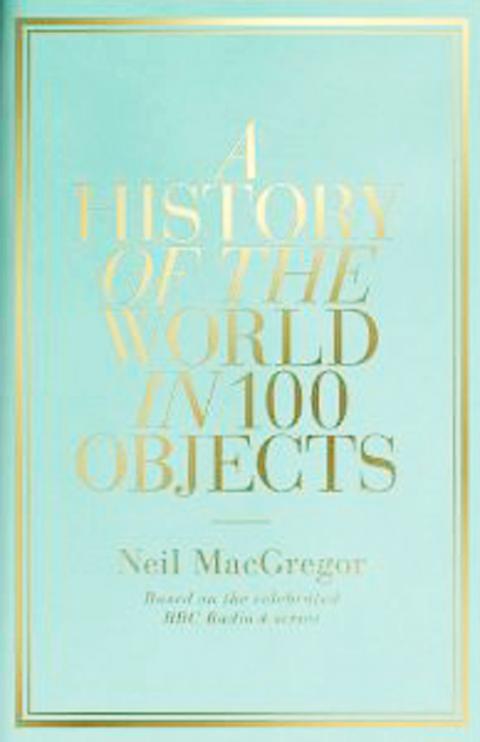There is considerable irony in the fact that BP should be the principal sponsor of exhibitions at the British Museum. At a time when the company’s own reputation is filthy black with spilled oil, the hard-nosed businessmen responsible for scouring it clean could do worse than look to the example of a softly spoken public servant with a background in fine art.
Neil MacGregor has been director of the British Museum for eight years now, and in that period he has presided over a truly startling transformation in its image. What was previously seen as something of a national embarrassment, a monument to British rapacity and taste for plunder, is now regarded with pride, and even devotion, as the Kew Gardens of global culture — a veritable seed bank of civilizations. As an exercise in rebranding, it is surely up there with the very best.
This year, first with a radio series and now with a book, Neil MacGregor has set the seal on his vision of the British Museum as the world’s supreme memory palace. One hundred objects have been selected from its unrivaled collections to illustrate the entire sweep of humanity’s history: from a 2-million-year-old stone chopping tool, fashioned at a time when Homo sapiens did not even exist, to a solar-powered lamp, which McGregor optimistically casts as embodying the technology of tomorrow. Amid all the swirl and sweep of his story, which transports us to every corner of the globe, and illustrates how different cultures have always communicated, traded and fought with one another, the various processes by which the British Museum came into possession of MacGregor’s 100 objects, and many more, come to seem just that little bit more normative.

It is hard to see Lord Elgin as someone wholly beyond the pale when his purchase of the Parthenon friezes is set alongside the abduction of a head of Augustus by a Sudanese queen, say, or the transportation of a west African drum on a slave ship to Virginia. MacGregor’s central point, that the cultures of the world are the inheritance of the world, is one he never neglects to emphasize.
And in pursuit of making it, he ventures down byways that not even the most avid visitors to the museum are likely to have explored. To be sure, many of the collection’s most iconic treasures are brought on stage to take a twirl: the Nineveh friezes, the Rosetta stone, the helmet from Sutton Hoo. Others, however — whether a Japanese clay pot, or shards of pottery from a Tanzanian beach — are altogether less starry. Most moving of all, perhaps, are those objects that have been so divorced from their original settings that even a guide as eloquent and empathetic as MacGregor struggles to provide a context for them. Describing one particular artifact, a sculpture of a woman from Mexico that could plausibly have been fashioned at any time between 900 AD and 1521 AD, he states that, “Of all the objects in our history, she is perhaps the hardest to read confidently through the filters of the historical record.” Yet what can be done to restore meaning to her, and dignity to whoever it was sculpted her — “the heart that fed” — MacGregor has done. Even oblivion, in this wonderful book, is given a voice.

In the March 9 edition of the Taipei Times a piece by Ninon Godefroy ran with the headine “The quiet, gentle rhythm of Taiwan.” It started with the line “Taiwan is a small, humble place. There is no Eiffel Tower, no pyramids — no singular attraction that draws the world’s attention.” I laughed out loud at that. This was out of no disrespect for the author or the piece, which made some interesting analogies and good points about how both Din Tai Fung’s and Taiwan Semiconductor Manufacturing Co’s (TSMC, 台積電) meticulous attention to detail and quality are not quite up to

April 21 to April 27 Hsieh Er’s (謝娥) political fortunes were rising fast after she got out of jail and joined the Chinese Nationalist Party (KMT) in December 1945. Not only did she hold key positions in various committees, she was elected the only woman on the Taipei City Council and headed to Nanjing in 1946 as the sole Taiwanese female representative to the National Constituent Assembly. With the support of first lady Soong May-ling (宋美齡), she started the Taipei Women’s Association and Taiwan Provincial Women’s Association, where she

Chinese Nationalist Party (KMT) Chairman Eric Chu (朱立倫) hatched a bold plan to charge forward and seize the initiative when he held a protest in front of the Taipei City Prosecutors’ Office. Though risky, because illegal, its success would help tackle at least six problems facing both himself and the KMT. What he did not see coming was Taipei Mayor Chiang Wan-an (將萬安) tripping him up out of the gate. In spite of Chu being the most consequential and successful KMT chairman since the early 2010s — arguably saving the party from financial ruin and restoring its electoral viability —

It is one of the more remarkable facts of Taiwan history that it was never occupied or claimed by any of the numerous kingdoms of southern China — Han or otherwise — that lay just across the water from it. None of their brilliant ministers ever discovered that Taiwan was a “core interest” of the state whose annexation was “inevitable.” As Paul Kua notes in an excellent monograph laying out how the Portuguese gave Taiwan the name “Formosa,” the first Europeans to express an interest in occupying Taiwan were the Spanish. Tonio Andrade in his seminal work, How Taiwan Became Chinese,